Top 5s in Tokyo Ep4 – Food Edition with Khaled Iwamura: Tama
Published August 21, 2019 at 12:32 pm
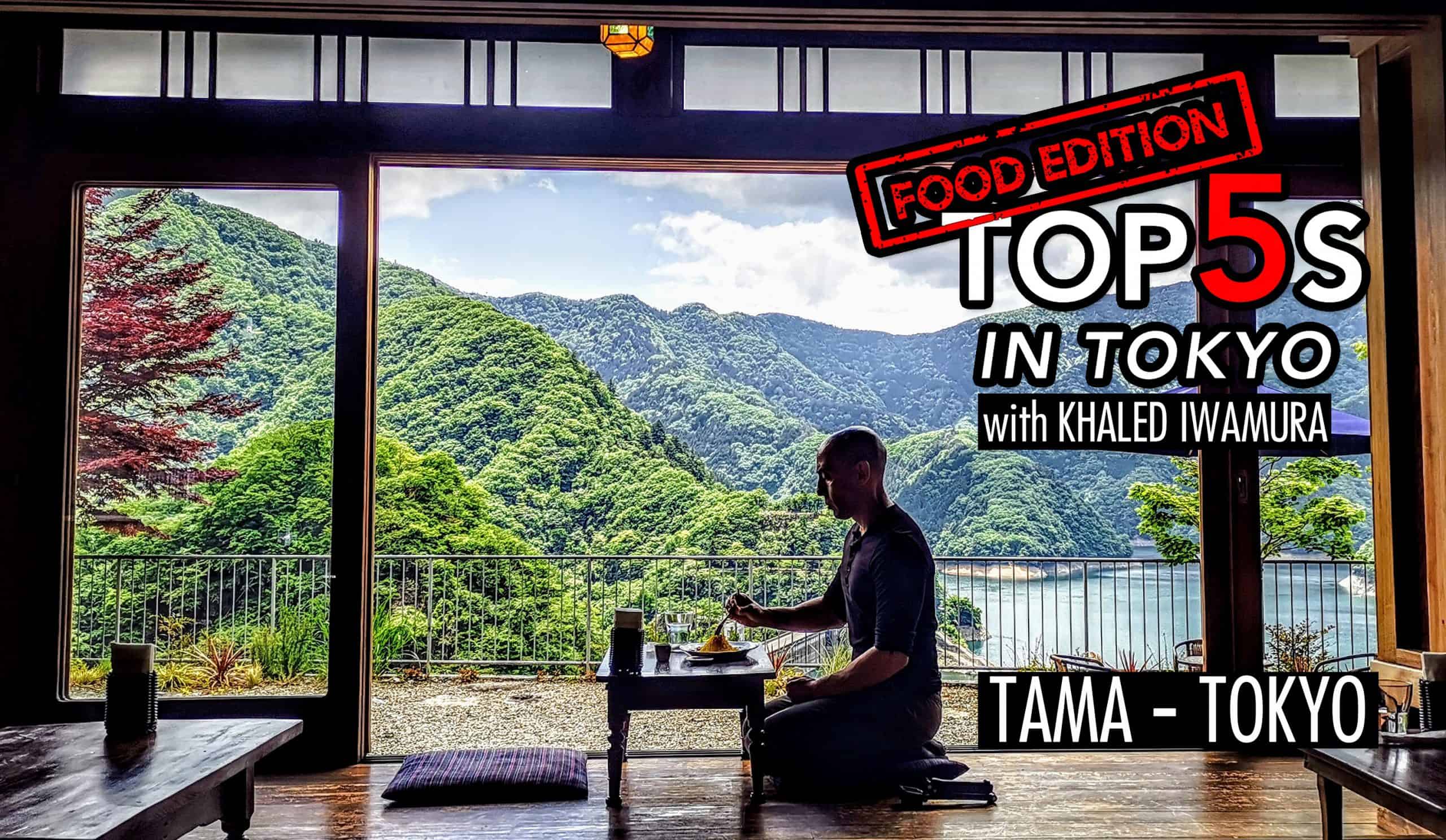
When you think of Tokyo, you might imagine the busy streets of Shibuya and the colourful lights of Shinjuku–but Tokyo can also look like this.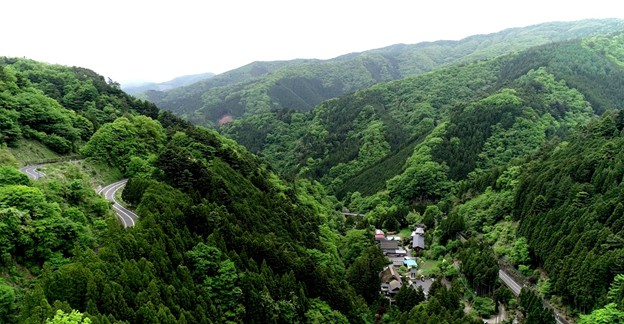
This gorgeous area is called Tama and it’s located in the Okutama Mountains in the western part of Tokyo. It is the largest municipality in Tokyo that has the highest peak at Mount Kumotori and is usually, on average, 6 degrees cooler than the city.
This area is absolutely stunning and you would have never guessed that it’s still in Tokyo!
Almost all the food served in Tama is seasonally prepared with locally sourced ingredients, including wild plants from the forest, local river fish, and meat caught in the Tama region.
Needless to say, it’s home to some of the freshest and most delicious dishes in Tokyo, and it offers some of the most incredible views in Japan.
Now let’s try to Top 5 most popular dishes in Tama:
5. OMELETTE RICE in Ayu Oil
Restaurants:kitchen CANVAS
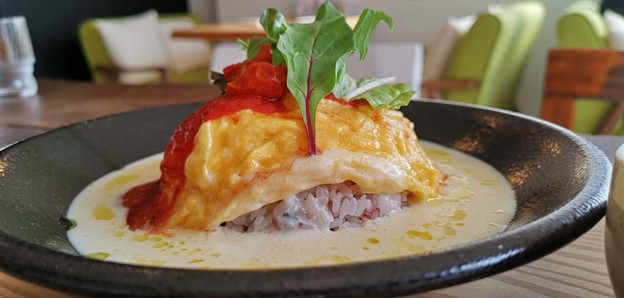
Kitchen CANVAS uses local ayu fish to make its own unique condiments such as–not anchovies–but “ayu-chovies” and ayu oil.
Flowing by the restaurant is the Aki River, which is the largest river feeding into the Tama River. This area, known as Akigawa Valley, is popular for its beautiful spring and autumn foliage and many outdoor activities, such as mountain stream fishing and trekking. Easily accessible from the city centers, outdoor enthusiasts flock to this area for mountain and river activities.
Ayu-chovies are made using the meat, bones and guts of wild ayu caught in Akigawa Valley and they go perfectly with the items on the menu. A popular item served at this restaurant, which focuses on natural and healthy food, is the omelette rice with ayu oil. Six-grain rice is wrapped in a fluffy omelette and topped with a white sauce accentuated by their housemade ayu oil.
Most of the furniture here is made of local Tama lumber from the valley, and old railroad ties from a track that runs by the restaurant are repurposed as tables, creating a space that emphasizes locally sourced materials.
4. Craft Beer Chicken Karaage
Restaurant: VERTERE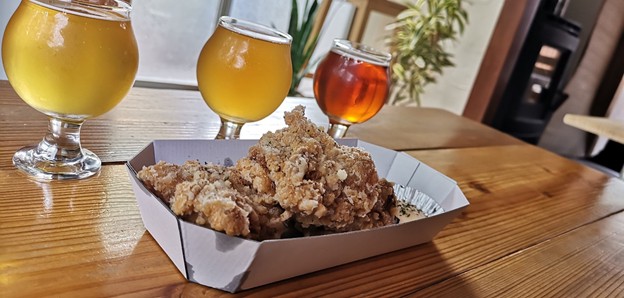
Vertere is a craft brewpub housed in a converted kominka house.
After apprenticing in the city, the owner decided to renovate a 70-year-old kominka to open a craft brewpub to brew beer in Okutama, an area with abundant water and lush nature. Some beers are crafted using locally harvested hops and fresh beer is offered at the pub as the brewery is located next to the pub.
They have ten varieties of original craft beer that are seasonally selected and served at the pub. Cream ale, amber, IPA, pale ale, and other fun styles of beer are brewed in small batches with the goal of “changing the perspective of those who taste it.”
The casual dishes served here are intended to be enjoyed with beer. Their deep-fried chicken, made tender with their milder beer, is juicy and satisfying. Chicken karaage is a popular dish eaten with drinks in Japan and goes exceptionally well with cold, freshly brewed beer.
3. Nabeyaki Udon Noodles
Restaurant: Dining Wazakura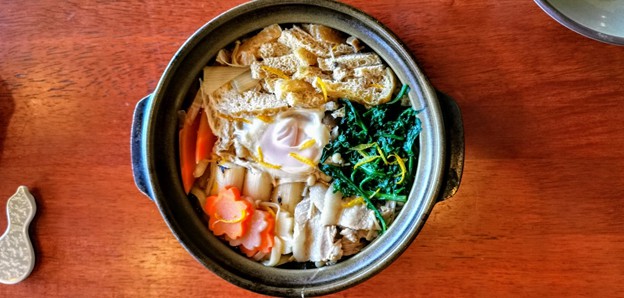 Dining Wazakura is a mom-and-pop eatery serving creative Japanese cuisine. It’s run by an owner who apprenticed in traditional Japanese restaurants and his wife. Their unassuming shop in a residential neighbourhood is a hangout spot for the locals.
Dining Wazakura is a mom-and-pop eatery serving creative Japanese cuisine. It’s run by an owner who apprenticed in traditional Japanese restaurants and his wife. Their unassuming shop in a residential neighbourhood is a hangout spot for the locals.
One of the most popular items on their menu is “Nabeyaki udon,” which is served at lunch.
Sakuragaoka, Tama, is the area where the story of “Whisper of the Heart,” an animated film produced by Japan’s beloved Studio Ghibli, takes place. Ever since its release in 1995, fans of the film from across Japan and abroad have been spotted in the areas near Seiseki Sakuragaoka Station, where the streetscape of the film comes to life.
Wazakura is located on a corner of the traffic circle that appears in the film and is frequently visited by fans looking for a place to eat in the area. The owner’s wife is a huge anime enthusiast and her fondness for the film is evident in the décor.
The idea for their nabeyaki udon came from a dish featured in the film. The owner’s culinary skills come through in the pot of warm soup with udon noodles served in traditional Japanese earthenware. Attention has also been given to the colours of the ingredients, making this dish worth seeing and tasting.
More about Nabeyaki udon
It is a special way of having udon, which is cooked in broth with vegetables (such as shiitake mushrooms, carrots and green onions), meat, uncooked eggs, and other toppings in an individual sized clay or stainless steel nabe (pot).
It is typically cooked and served right in the small personal size pot, still bubbling hot. The fact that udon noodles are cooked in a broth absorbing the dashi flavour sets nabeyaki udon apart from other types of udon dishes.
There are many variations in the broth and noodles. Nabeyaki udon is found across Japan as a regional dish and is different in each locale or restaurant.
Different theories exist as to the origin of nabeyaki udon, but it appeared in a play that premiered in 1865, suggesting that it was a popular dish back then.
2. Smoked Venison Curry
Restaurant: Café Indigo Blue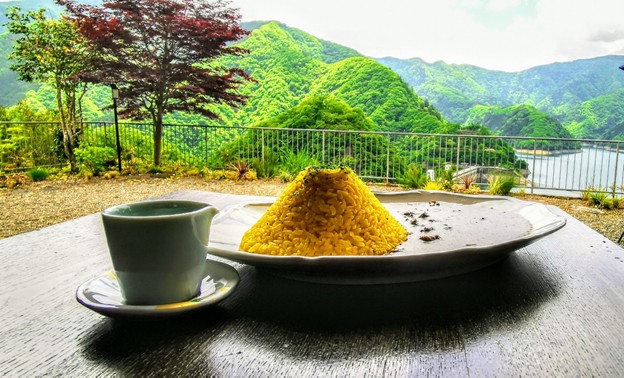
Café Indigo Blue is an old Japanese-style house(kominka) turned café that overlooks Lake Okutama, which is nestled in the mountains of Tokyo.
Its popular dish of curry with rice “Oh☆Deer” is plated to look like the lake and mountains that can be seen from the porch. A chef working at the hotel run by the company operating the café came up with this curry dish, which is prepared with venison from the Okutama region. The venison is first smoked then ground to go nicely with curry, and the dish is topped with a dash of wasabi oil made with local wasabi.
The wasabi that grows in beds of pristine water flowing through Okutama has long been cherished as one of Okutama’s local products, since as far back as the Edo period.
Café Indigo Blue was designed to be a comfortable and relaxing space to let customers bask in Tokyo’s nature, a rather contrasting idea that came from the owner who operates a hotel in Shibuya, right in the heart of the city.
1. Irori Grilled Set Course
Restaurant: Kabuto-ya Ryokan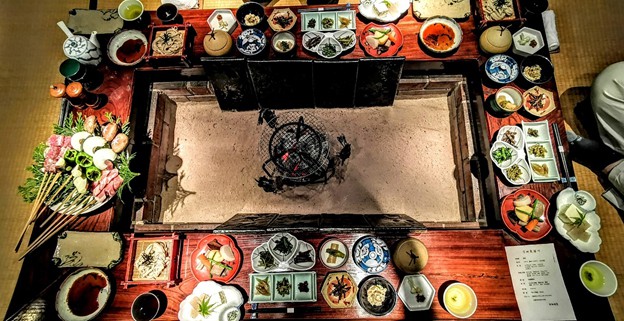
Hinohara Village in Okutama is nestled deep in the green mountains, and this is where Kabuto-ya Ryokan is located–in Kazuma near the prefectural border. There are hot springs in the forest that overlook mountain streams. The temperature here is about 6 degrees cooler than in the city.
The name Kabuto-ya comes from the warrior’s helmet-like structure of the 250-year-old main house. With thick pillars and beams and a thatched roof, the building is a piece of history preserved in time. The songs of birds, the rustling of the stream, and the warms of wood will give you a sense of what it was like to live in the old times, surrounded by mountains and nature. You will not believe you are still in Tokyo.
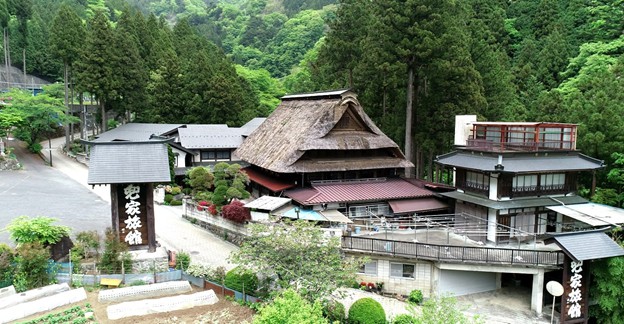
At the inn, guests are treated to seasonal dishes prepared with locally sourced ingredients, including wild plants, river fish, and wild boar.
Dishes featuring seasonal wild plants harvested locally are served with trout from local rivers, beef, poultry and vegetables that are grilled on an irori charcoal grill. This is a set course menu with over 15 different varieties of foods, including fish caught in the pristine waters of mountain streams, which guests grill over a traditional irori. The set course of skilfully prepared dishes with local ingredients is a gastronomic delight for the senses.
Gassho-zukuri house
The kabuto style of traditional Japanese minka houses came from Kai during the Edo period. This particular style of homes was used for sericulture and designed with an iriomoya roof with gables out of practicality. Formally called “Fujikei gasshou zukuri,” this wooden joint construction hardly uses any nails.
Many of Kazuma’s minka houses are gasshou zukuri structures and are called the kabuto style or kabuto type because of their warrior’s helmet-like roofs, and have 400 years of history. Today, there are only four structures remaining that were built in this gasshou zukuri style.
Irori
An irori is a traditional Japanese sunken hearth. Used for heating the home and for cooking food, it is essentially a square, stone-lined pit in the floor.
BONUS: Matcha Tea with Rakugan
CAFE: Temple Café Syu-un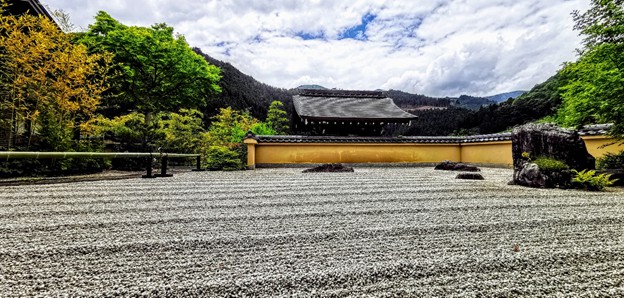
Temple Café Syu-un is a hidden gem in the midst of Hinohara’s abundant nature, housed in the Gyokudenji Temple.
The café opened in 2016, right inside the temple as part of community revitalization efforts. Seats are arranged to allow guests to relax and enjoy matcha tea with handmade Japanese sweets while feeling the gentle breeze as they admire the views of the temple’s manicured zen garden.

What is rakugan?
Rakugan is a type of traditional dry Japanese sweet made by adding syrup and sugar to a starchy powder such as rice flour, then adding a colour to the paste before pouring it into moulds to dry. Rakugan is traditionally enjoyed as sweets served at a tea ceremony.









